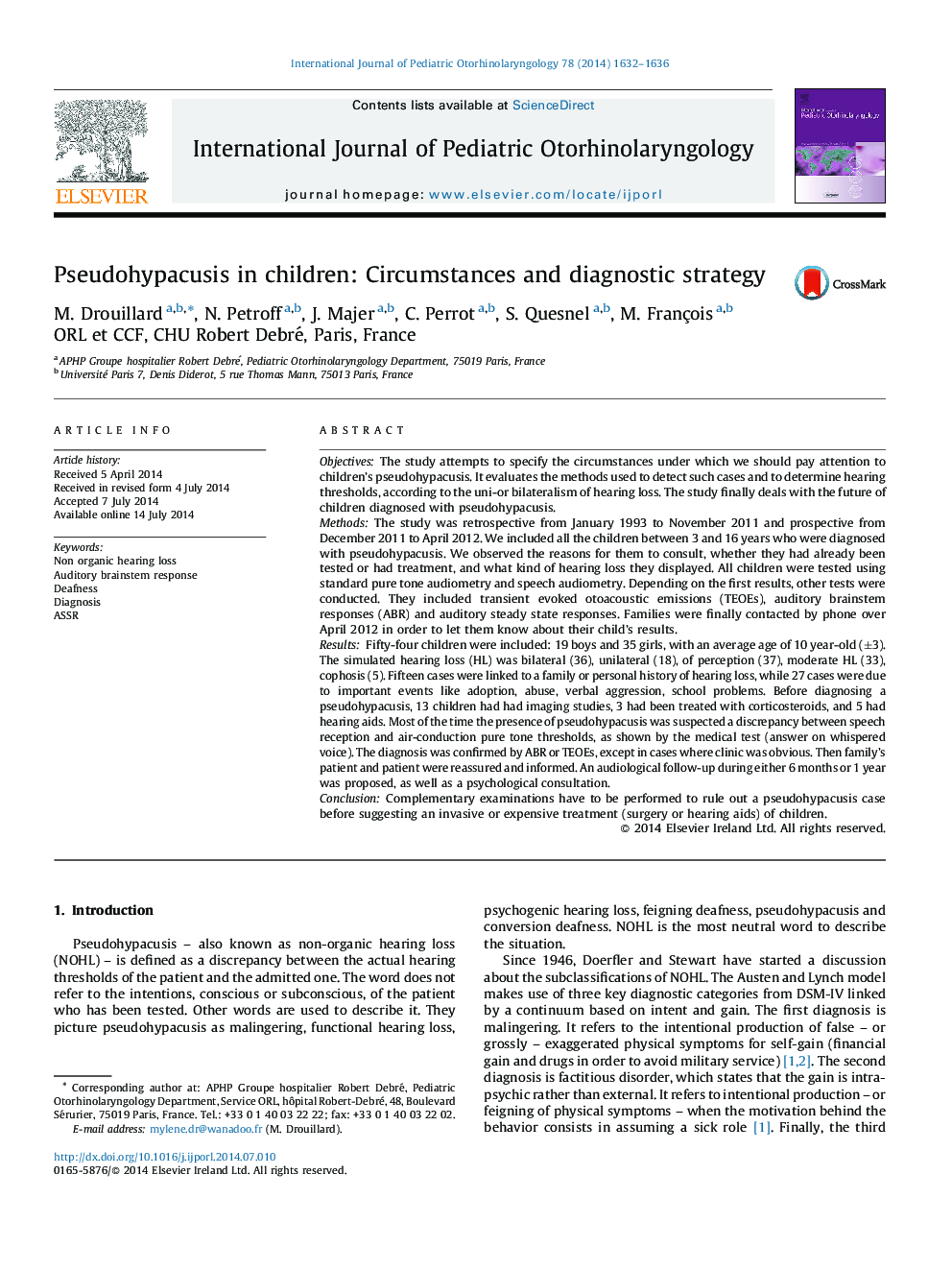| کد مقاله | کد نشریه | سال انتشار | مقاله انگلیسی | نسخه تمام متن |
|---|---|---|---|---|
| 6213739 | 1606003 | 2014 | 5 صفحه PDF | دانلود رایگان |

ObjectivesThe study attempts to specify the circumstances under which we should pay attention to children's pseudohypacusis. It evaluates the methods used to detect such cases and to determine hearing thresholds, according to the uni-or bilateralism of hearing loss. The study finally deals with the future of children diagnosed with pseudohypacusis.MethodsThe study was retrospective from January 1993 to November 2011 and prospective from December 2011 to April 2012. We included all the children between 3 and 16 years who were diagnosed with pseudohypacusis. We observed the reasons for them to consult, whether they had already been tested or had treatment, and what kind of hearing loss they displayed. All children were tested using standard pure tone audiometry and speech audiometry. Depending on the first results, other tests were conducted. They included transient evoked otoacoustic emissions (TEOEs), auditory brainstem responses (ABR) and auditory steady state responses. Families were finally contacted by phone over April 2012 in order to let them know about their child's results.ResultsFifty-four children were included: 19 boys and 35 girls, with an average age of 10 year-old (±3). The simulated hearing loss (HL) was bilateral (36), unilateral (18), of perception (37), moderate HL (33), cophosis (5). Fifteen cases were linked to a family or personal history of hearing loss, while 27 cases were due to important events like adoption, abuse, verbal aggression, school problems. Before diagnosing a pseudohypacusis, 13 children had had imaging studies, 3 had been treated with corticosteroids, and 5 had hearing aids. Most of the time the presence of pseudohypacusis was suspected a discrepancy between speech reception and air-conduction pure tone thresholds, as shown by the medical test (answer on whispered voice). The diagnosis was confirmed by ABR or TEOEs, except in cases where clinic was obvious. Then family's patient and patient were reassured and informed. An audiological follow-up during either 6 months or 1 year was proposed, as well as a psychological consultation.ConclusionComplementary examinations have to be performed to rule out a pseudohypacusis case before suggesting an invasive or expensive treatment (surgery or hearing aids) of children.
Journal: International Journal of Pediatric Otorhinolaryngology - Volume 78, Issue 10, October 2014, Pages 1632-1636